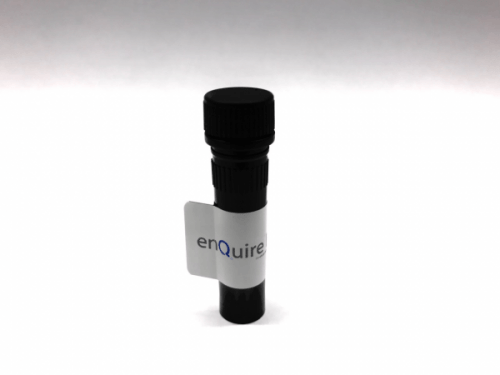Human and Mouse Anti-Plakophilin-1 Antibody Product Attributes
Plakophilin-1 Previously Observed Antibody Staining Patterns
Observed Subcellular, Organelle Specific Staining Data:
Anti-pkp1 antibody staining is expected to be primarily localized to the nucleoplasm.
Observed Antibody Staining Data By Tissue Type:
Variations in Plakophilin-1 antibody staining intensity in immunohistochemistry on tissue sections are present across different anatomical locations. An intense signal was observed in squamous epithelial cells in the esophagus, keratinocytes in skin, Langerhans in skin and melanocytes in skin. More moderate antibody staining intensity was present in squamous epithelial cells in the esophagus, keratinocytes in skin, Langerhans in skin and melanocytes in skin. Low, but measureable presence of Plakophilin-1 could be seen in cells in the granular layer in cerebellum, cells in the molecular layer in cerebellum, endothelial cells in the cerebral cortex and colon, glandular cells in the fallopian tube, glial cells in the hippocampus, bile duct cells in the liver, myocytes in skeletal muscle, fibroblasts in skin, cells in the red pulp in spleen, cells in the white pulp in spleen and cells in the seminiferous ducts in testis. We were unable to detect Plakophilin-1 in other tissues. Disease states, inflammation, and other physiological changes can have a substantial impact on antibody staining patterns. These measurements were all taken in tissues deemed normal or from patients without known disease.
Observed Antibody Staining Data By Tissue Disease Status:
Tissues from cancer patients, for instance, have their own distinct pattern of Plakophilin-1 expression as measured by anti-Plakophilin-1 antibody immunohistochemical staining. The average level of expression by tumor is summarized in the table below. The variability row represents patient to patient variability in IHC staining.
| Sample Type | breast cancer | carcinoid | cervical cancer | colorectal cancer | endometrial cancer | glioma | head and neck cancer | liver cancer | lung cancer | lymphoma | melanoma | ovarian cancer | pancreatic cancer | prostate cancer | renal cancer | skin cancer | stomach cancer | testicular cancer | thyroid cancer | urothelial cancer |
|---|---|---|---|---|---|---|---|---|---|---|---|---|---|---|---|---|---|---|---|---|
| Signal Intensity | ++ | + | +++ | ++ | ++ | + | ++ | ++ | ++ | ++ | + | ++ | ++ | ++ | ++ | ++ | ++ | ++ | ++ | +++ |
| PKP1 Variability | + | ++ | ++ | ++ | + | ++ | ++ | + | ++ | + | ++ | + | + | ++ | ++ | ++ | + | ++ | ++ | ++ |
| Plakophilin-1 General Information | |
|---|---|
| Alternate Names | |
| Plakophilin-1, PKP1 | |
| Molecular Weight | |
| 75kDa | |
| Chromosomal Location | |
| 1q32 | |
| Curated Database and Bioinformatic Data | |
| Gene Symbol | PKP1 |
| Entrez Gene ID | 5317 |
| Ensemble Gene ID | ENSG00000081277 |
| RefSeq Protein Accession(s) | NP_000290, NP_001005337 |
| RefSeq mRNA Accession(s) | NM_000299, NM_001005337 |
| RefSeq Genomic Accession(s) | NC_018912, NG_023337, NC_000001 |
| UniProt ID(s) | Q13835, A0A024R952 |
| UniGene ID(s) | Q13835, A0A024R952 |
| HGNC ID(s) | 9023 |
| Cosmic ID(s) | PKP1 |
| KEGG Gene ID(s) | hsa:5317 |
| PharmGKB ID(s) | PA33356 |
| General Description of Plakophilin-1. | |
| Recognizes a protein of 75kDa, identified as Plakophilin-1. Its epitope maps between aa 1-27 human Plakophilin-1. Plakophilins 1, 2, 3 and 4 (PKP1-4) influence development and participate in linking cadherins to cytoskeletal intermediate filaments. Plakophilins 1-4 contain arm-repeat (armadillo) domains and localize to nuclei and cell desmosomes (cell-cell junctions found in suprabasal layers of stratifying epithelia that undergo mechanical stress). Plakophilin 2 is important for desmosome assembly and is an essential morphogenic factor and architectural component of the heart. | |




There are no reviews yet.